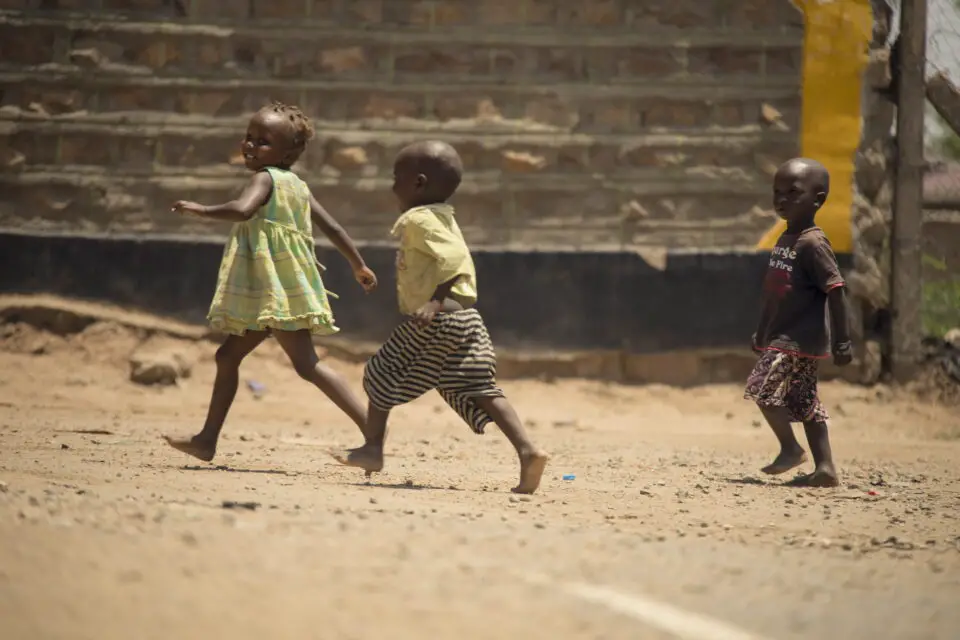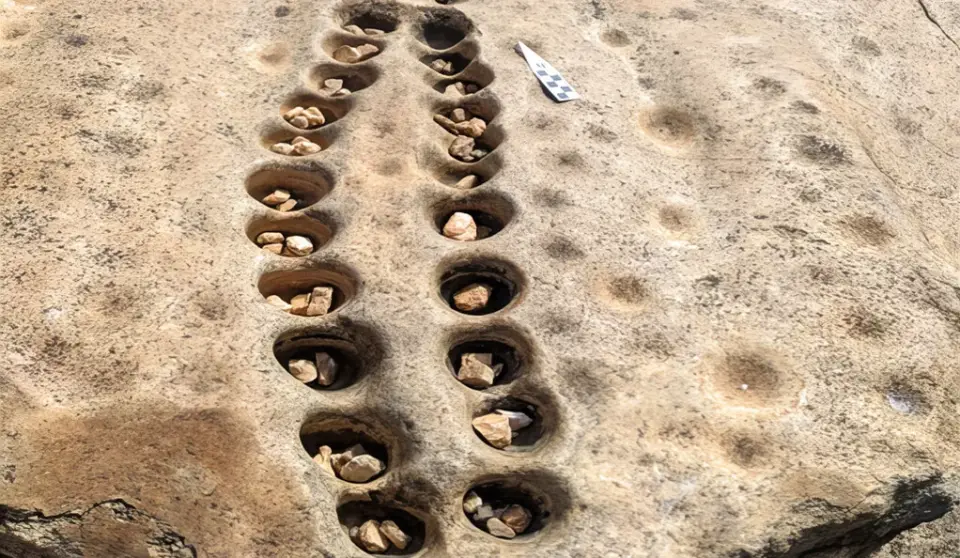What Are Some Examples of Indigenous Tagging Games in Kenya?

Indigenous tagging games in Kenya, like in many cultures, are traditional games that have been passed down through generations.
These games often reflect the community’s way of life, social structures, and environment.
Here are two examples:
Table of Contents
Indigenous Tagging Games in Kenya #1: Kati (or Kati-Kati)
Kati is a popular game among children in Kenya, particularly among the Kikuyu community. It involves two teams, with one team standing in the middle while the other team stands at opposite ends of the playing area. The goal is for the players in the middle to avoid being hit by a ball that the players on the ends throw at them. If a player in the middle is hit by the ball, they are out. The game continues until all players in the middle are hit, after which the teams switch roles.
READ ALSO: 7 Popular Sports in Kenya & More
Examples of Tagging Games in Kenya #2. Cha Mama (Mother’s Game)
- How it’s played: One child plays the “mother,” while others run around in an attempt to avoid being tagged. If the mother tags you, you become the next “mother.”
- Cultural significance: This game mirrors family roles and responsibilities, emphasizing respect and fun in social interactions.
Indigenous Counting Games in Kenya
Indigenous counting games in Kenya are part of traditional oral literature and play, serving both as educational tools and as a means of cultural preservation. These games are often intertwined with song, dance, and storytelling, reflecting the rich cultural diversity of Kenya’s various ethnic communities.
Purpose of Counting Games
- Numeracy Skills: They help children learn basic arithmetic, including counting, addition, and subtraction, in an engaging and interactive manner.
- Cultural Transmission: These games teach children about their community’s traditions, languages, and values.
- Social Development: They foster teamwork, communication, and social interaction.
Examples of Counting Games
- “Mbweha na Kuku” (Fox and Hen)
- Community: Found among the Kikuyu and other Bantu-speaking groups.
- How it Works: Children form a circle and sing a counting rhyme as one person, representing the “fox,” tries to catch a “hen.” Each number corresponds to a movement or action in the game. This teaches both counting and quick thinking.
- “Chako Changu” (What’s Mine?)
- Community: Common among Swahili-speaking communities along the coast.
- How it Works: Players collect objects like pebbles or shells and count them while reciting a rhythmic chant. The game also incorporates bargaining and sharing, teaching children resource management.
- “Enkeshui” (Counting Beads)
- Community: Practiced by the Maasai.
- How it Works: Children use beads to count in groups, reinforcing their understanding of numbers and patterns. This game often coincides with storytelling about the significance of beads in Maasai culture.
- “Oringa” (The Hoop Game)
- Community: Played by Luo and Luhya children.
- How it Works: Children throw stones or small objects through a hoop while counting their successful attempts. It combines physical activity with arithmetic skills.
Rhymes and Songs
Most counting games involve rhymes or songs in indigenous languages. These are rhythmic and repetitive, aiding memory and language acquisition. For example, in Kikuyu culture, counting rhymes often include moral lessons or references to daily life, like farming or family.
Indigenous Kenyan Games #7. Ajua Board Game (Bao)

Roles of Indigenous Tagging Games
Indigenous tagging games (and closely related chase/tag‑style games) play several important roles across societies. Below are some of the core functions they fulfil.
Physical And Motor‑skills Development
Games where children or young people chase, tag, evade or coordinate with others help build agility, speed, balance and coordination.
For example, in one northern Indigenous community a tag‑game involved using one’s foot to tag another’s foot, thereby practicing balance and foot‑coordination. These physical skills link to survival‑oriented activities (in hunting or gathering societies) and remain useful for general health.
Socialisation And Community Bonding
Tag and chase games are inherently social: they involve multiple participants, interaction, turn‑taking, rules, making decisions on the move and cooperating or competing.
Through play children learn how to engage with peers, recognise others’ roles, follow agreed rules and contribute to group dynamics. One study found that among the Akamba of Kenya, traditional games emphasised communal ways of life and interaction between children and adults in the community.
Cultural Transmission and Identity
These games reflect cultural values, environmental context, history and identity. They pass on aspects of tradition—even if the game appears simple.
For example, a document describing Indigenous games in Canada notes that many such games taught mental and physical strength, endurance, reflexes and focus, aligned with the local climate and lifestyle. (By playing the same games across generations a community affirms its cultural continuity, expresses its distinctiveness and embeds identity in everyday childhood activity.
Cognitive and strategic learning
Beyond running or tagging, many of these games include elements of decision‑making, strategy, anticipation, cooperation or competition. The Kenyan research noted games “involving physical skill and strategy” where outcomes depended not only on speed but also on rational choices.
Tag‑type games may require players to observe, predict opponents, choose when to tag or when to evade, thus sharpening cognitive as well as physical faculties.
Adaptation To Environment And Context
Many Indigenous games evolve to fit the local environment (available space, climate, resources) and cultural needs.
For instance, in jobs where hunting in difficult terrain or in darkness was required, games developed that trained endurance, balance and reflexes. (Even materials needed tend to be minimal or drawn from the local surroundings, making the games accessible to wide portions of the community.
Preservation of Heritage and Resilience
While modern sports often dominate, these tagging and chase‑games hold value in preserving cultural heritage. Some communities see these as an opportunity to maintain linkages to tradition, to engage youth in culturally meaningful activity, and to build resilience against cultural erosion.
One study cautions that many traditional games are declining as modern sports take over, yet the games still “carry value that made it necessary for them to be preserved and passed from one generation to another.”
Use in Education and Health Promotion
In more formal settings (schools, community programmes) such games are sometimes used to teach physical education, cultural awareness or life skills.
The documents on Indigenous games for children suggest that such games serve dual roles of recreation and learning (for example balance games, tag games, etc)
Special Role of Tagging/Chase Mechanics
The act of chasing/tagging introduces particular dynamics: the excitement of pursuit and evasion, managing motion in space, awareness of others and timing. These dynamics make such games especially useful for building confidence, reflexes, quick decision‐making and investment in group interaction.
They also mirror some survival behaviours (for example avoiding predator or pursuing prey) though in a playful and safe context.
In short, Indigenous tagging games are far more than “just fun” — they are vehicles for physical development, social learning, cultural transmission, cognitive growth, environmental adaptation and heritage preservation.
READ ALSO: 8 Interesting Games in Kenya & More
Photo Credits: FIFPRO, Washington Examiner, The Elephant, Eric Lafforgue, FurnitureAndDecorNY, Discover Walks Blog, Wallpaper Flare, Arkeonews